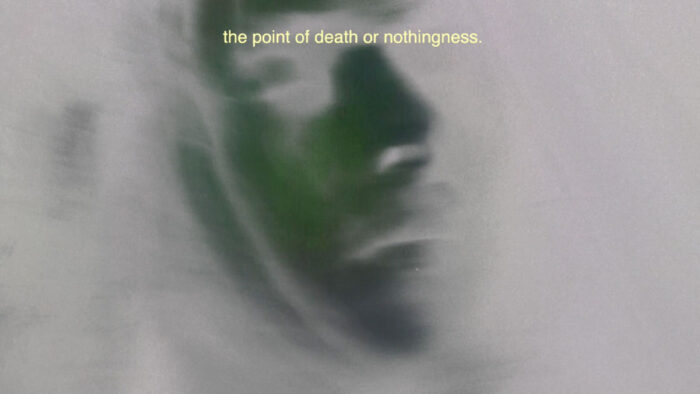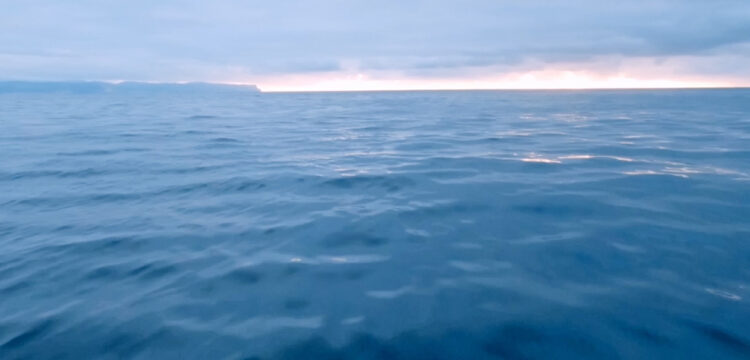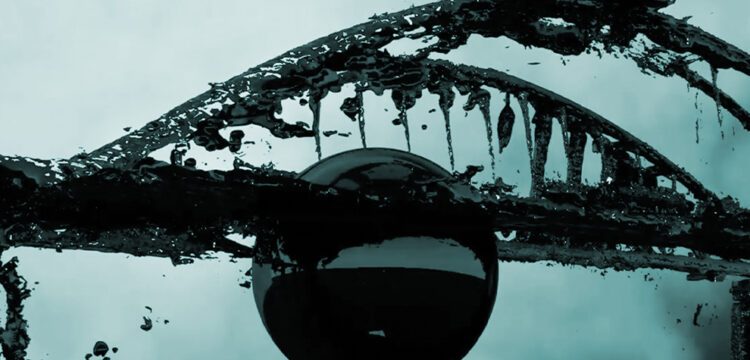Metabolic Rituals
Sound and performance as processes of transformation at Berlin Atonal 2023
Through a ten-day programme of performances, concerts and exhibitions, the 10th edition of Berlin Atonal taking place at Kraftwerk generated a space for experimentations with multiple forms of temporalities and codes of behaviours.
In Europe, the 20th century industrial buildings are often compared with mediaeval cathedrals, not only because of their overwhelming dimensions and upwards tension in their architectonic configurations, but also because they have been the sites where the life of entire communities were arranged according to determined social and political structures. More than just architectonic spaces, industrial buildings and cathedrals were the apparatuses to impose upon human communities forms of life to be collectively performed, thus constituting specific kind of temporalities: while time in mediaeval societies was marked by cycle of religious functions, 20th century industrialised societies were informed by production cycles implemented within factories and power plants. Therefore, although seemingly deprived of any religious connotations, industrialisation developed its own system of rituals in order to arrange human life according to its own functioning. As a result, factories and power plants replaced churches and cathedrals, technological progress replaced Christian cosmology, assembly lines replaced church services. However, with the de-industrialisation of the European continent occurring in the new millennium, most of these industrial buildings now appear as ruins from a past civilisation.
In the heart of Berlin one could find one of these industrial cathedrals, Kraftwerk, the former power plant Mitte, now hosting the Berlin Atonal festival. Its 10th edition presented a dense ten-day programme of sound performance and concerts, as well as the exhibition Universal Metabolism. Kraftwerk’s industrial building was then revitalised with new forms of rituality and temporality, which, this time, do not impose predetermined patterns of behaviour, but rather generates the space for experimentations with multiple forms of temporalities and codes of behaviours. This form of “critical” ritualism emerges from the whole structure of the festival, as a result of the combination of multiple elements, as well as of the single works presented which articulate this fundamental notion according to different approaches and dynamics. In this way, this complex network of elements composing the festival allow for the explorations of the various modalities in which this ritual stance might develop when no longer constrained by normative socio-political structure and specific world-views.
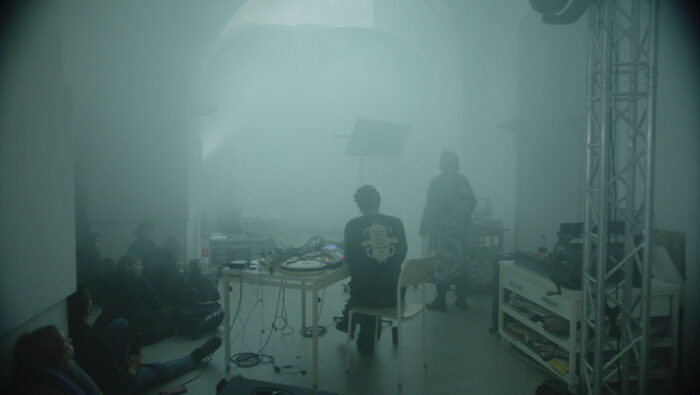
Universal Metabolism
The conceptual framework of the exhibition part of the programme of the festival, Universal Metabolism, further re-elaborates this notion of rituality by combining it with a biological function, which shares similar ways of operating. A ritual can be considered as a sequence of actions and behaviours performed by an individual or an entire community to establish a connection with the obscure and unknown forces of nature, i.e., the sacred sphere. In a similar way, metabolism is a sequence of chemical reactions which allows an organism to establish a relation with external agents in order to extract the elements necessary for its sustenance. Thus both rituals and metabolism are processes of transformation (metabolism comes from the Greek metabolē, which means “change”) that develop from the outside to the inside and to the outside again. And interestingly, both rituals and metabolism involve an amount of violence and destruction necessary to activate that process of transformation, as they go through a moment in which the two sides at play—the outside and the inside, the organism and the environment, the human and the sacred—are momentarily indistinguishable. The boundaries between the two sides are temporarily dismantled to briefly open up a gap in which the agents performing the ritual, or the metabolic process, are able to absorb the forces necessary for their functioning. A process of Universal Metabolism therefore hints to a radical, thus also traumatic, process of transformation involving reality in its totality, which offers at least three possible interpretations, somehow complementary to each other: 1) as the constant and fundamental transformation of reality into something else; 2) as the current crisis of planetary ecosystem and global political instability rapidly transforming aspects of the world traditionally considered sufficiently stable, such as climate and geopolitical orders 3) as the total and radical process of transformation required to face the dramatic challenges that humanity is currently facing. Among the numerous works featured in the festival, three pieces could rightly represent this radical aspect of the festival, that is, Florentina Holzinger’s Ètudes for Church, Romeo Castellucci’s Third Reich, and Rebecca Salvadori’s Messengers.

Florentina Holzinger, Ètudes for Church
The piece Ètudes for Church by Florentina Holzinger overwhelms the viewer with intense sensorial elements which are organised into a rigorous performative structure, adopting and re-elaborating the most canonical symbolism of Christian art and rituality. In this way, she uncovers the brutality of this religion often disguised by aesthetic apparatuses that conceal the original violence laying at its core, while also amplifying and embracing this violence to operate an immanent critique of this system of beliefs. Also at the iconographic level, the performance recalls the classical religious format of a triptych altarpiece, where a central main figure is flanked by two minor symmetric figures. Ètudes for Church explicitly refers to the notion of étude in classical music—“an étude is a musical composition of considerable difficulty, as Frédéric Chopin defines it, designed to provide practice material for an instrument and its player.” However, in this case, the practice materials are the bodies of the performers executing intense forms of physical activities, also by dangerously bordering on their destruction. An approach which recalls Antonin Artaud’s idea of theatre, “whose only value—as he states in his manifesto Theatre of Cruelty—lies in its agonising magic relationship to reality and danger.” Stunts effects in Florentina Holzinger’s piece are indeed not just elements to impress the viewer, but exploration of the extreme possibilities of theatre and performance.

The piece consists of a two-ton bell hanging from the ceiling of Kraftwerk, whose clapper is the performer herself, swinging and hitting the inside walls of the bell. Two other performers then descend upon the bell and with an increasing, then decreasing tempo hit it with hammers. Following, two large metal sheets and two other performers ascend from the ground joining the aerial performance space, one on each side of the bell. The two performers are suspended by hooks piercing the flesh of their back and are pulled by a rope tied to their ankles, which make them slam against the metal sheets, producing rumbles which echo in the whole space. Borrowing elements from Christian rituality, while exposing and inflicting pain to their bodies, the performers unveil and reverse the violence that Christianity has exerted for centuries over women. Yet the pierced, bleeding, shaken female naked bodies performing in a recreated church space seem to reincarnate the haunting spirit of the fifth century astronomer and mathematician Hypatya, whose body was brutally torn apart by a group of ecclesiastes in the Church of Alexandria, as she was guilty of being a free-thinker, a pagan, and foremost, a woman. With Ètudes for Church, Florentina Holzinger thus creates a short circuit that exposes these forms of cruelty, while embracing, exasperating and finally reversing them.

Romeo Castellucci, Third Reich
In a way that can be somehow comparable to Florentina Holzinger’s piece, the work Third Reich by Romeo Castellucci exposes the violence concealed in verbal language, whose intensity is epitomised by the reference to the most brutal regime of the past century, i.e., the Third Reich. The piece is a frantic sequence of all names found in the Italian dictionary (translated into English), introduced by a ritual performed before an altar. Projecting each word on the screen just for a twentieth of a second, which is the minimum amount of time necessary for our brain to recognise an image as a distinct object, Third Reich develops on a borderline spatiotemporality in which our attention and ability to process visual information is captured and put under stress, thus making evident the intrinsic violence of language as it turns the viewer into a passive agent. Yet this violence can also be found in the historical origin of language. Linguists and anthropologists have demonstrated how language as a codified system of symbols is originally imposed over its users through processes of inscriptions on their bodies, which usually take the forms of religious and initiatic rituals. Referring to these theories, in the Anti-Oedipus, Deleuze and Guattari note that primitive systems of codification are created through “a system of cruelty”, i.e., “tattooing, excising, incising, carving, scarifying, mutilating, encircling, and initiating”, which result in a “terrible alphabet” whose signs are directly traced on the bodies of the members of the linguistic community. “It is this cruel system of inscribed signs that renders man capable of language—Deleuze and Guattari argue—and gives him a memory of the spoken word.” Thus, inflicting pain functions as a mnemotechnics which represses human biological memory and replaces the memory of real things with the memory of their corresponding words. Yet, following the evolution of human civilisations towards higher levels of abstraction, systems of cruelty linked to use of language have not disappeared, but have just changed their nature, although maintaining a similar amount of ferocity. Systems of codification are no longer inscribed on our skin, but, as Romeo Castellucci seems to suggest, on our cerebral cortex via eyes’ retina.
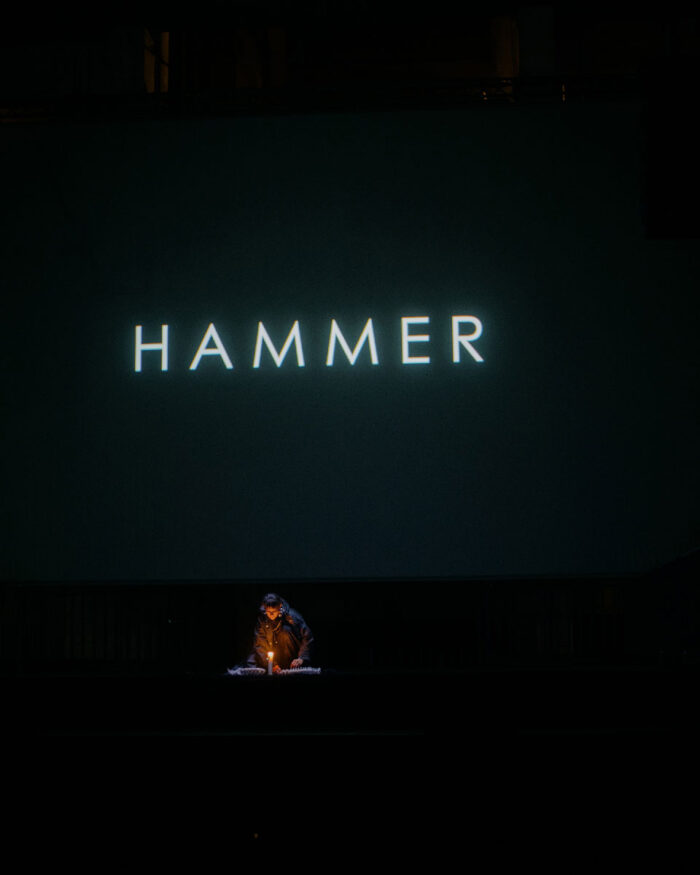
Rebecca Salvadori, Messengers
In the film Messengers by Rebecca Salvadori, verbal language becomes instead the medium for the creation of a collective space of shared visions, affects and ideas. And although the sacral energy that pervades the film and the intensity of the interactions at play connote the scenario represented in the film as a collective ritual, this form of rituality emerging here remains undetermined, thus open to multiple possibilities. The film takes place in a former monastery at PAF Olomouc 21st Festival of Film Animation and Contemporary Art, and at Marsèll Paradise in Milan as part of the exhibition project The Sun Has No Shadow, where Rebecca Salvadori filmed a series of live performances, as well as one-to-one conversations among the performing artists and the audience attending the two events, mainly on the nature of friendship and music. Within this context, multiple life experiences meet and combine together to create a collective dimension in which each subjectivity is able to enhance its agency, rather than giving up on it. “Disappearing no more”, as it is stated in the film. And the initial question “where do we belong?”, that is, the research of a dimension where everyone is able to unfold and develop their subjectivity, informs the whole film. A dimension that can be found, as the musician Kenichi Iwasa featuring in the film suggests, in “the space in between”, as “in between me and you there is so much—he continues addressing the artist behind the camera—that’s where we belong, I guess.” So the whole film develops in this undefinable space in between which is therefore in a constant state of becoming. These conversations merge together with music and sound, which function as the catalysers of these shared experiences, thus providing this space in between with an intangible and fluctuating structure. “When the sound happens you have to be there,” states Kenichi Iwasa, as sound calls you to presence, although without giving clear instructions on how to be present, therefore encouraging one to activate their autonomous agency. Yet, the film concludes with a clear exhortation: “Don’t wait for authorisation” a statement that also reflects the nature of the past edition of Berlin Atonal.
